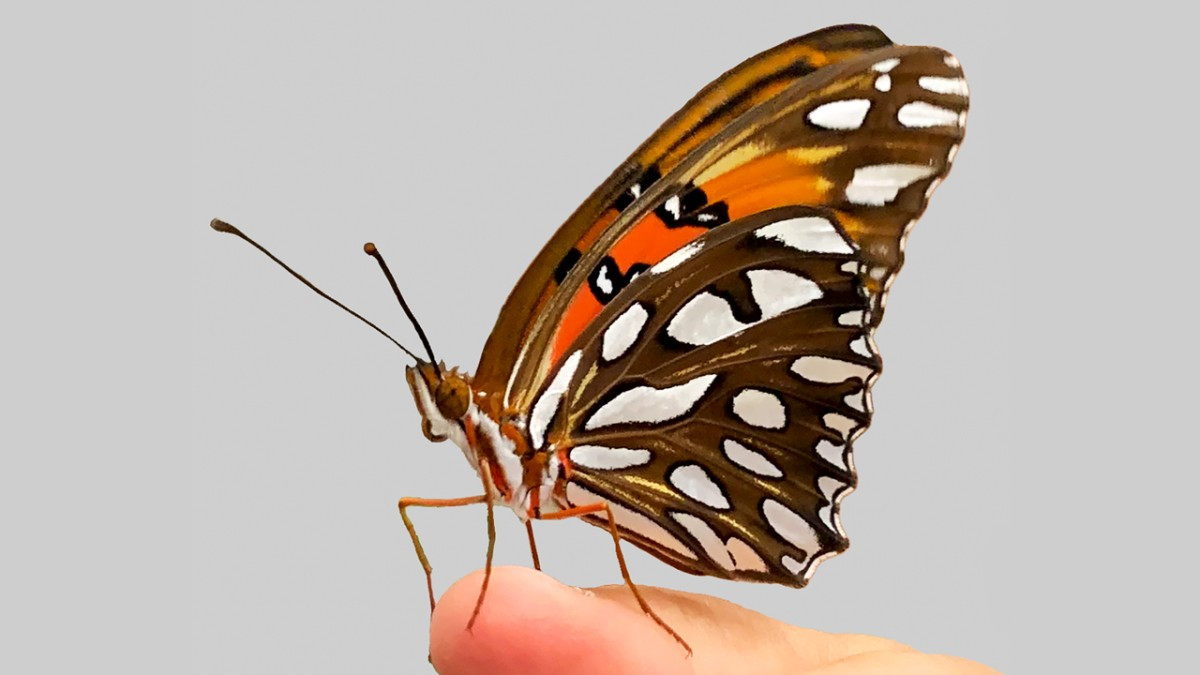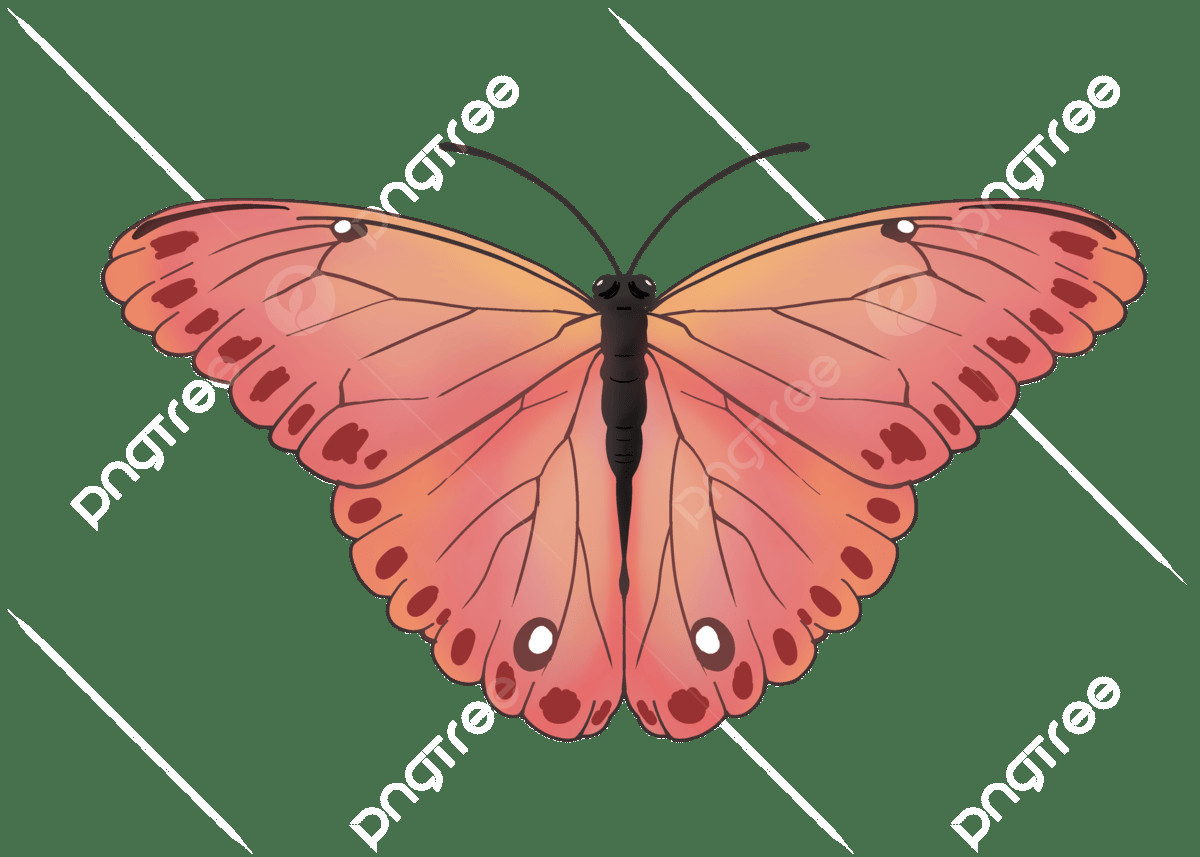An international team of researchers has revealed an unexpected genetic process that shapes the intricate and colorful patterns on butterfly wings. Published in the Proceedings of the National Academy of Sciences, the study led by Luca Livraghi from George Washington University and the University of Cambridge, identifies an RNA molecule, rather than a protein as previously believed, as crucial in controlling the spread of black pigment on butterfly wings.
Precisely how butterflies are able to generate the vibrant patterns and colors on their wings has fascinated biologists for centuries. The genetic code contained within the cells of developing butterfly wings dictates the specific arrangement of the color on the wing’s scales—the microscopic tiles that form wing patterns—similar to the arrangement of colored pixels to form a digital image.
Cracking this code is fundamental to understanding how our own genes build our anatomy. In the lab, researchers can manipulate that code in butterflies with gene-editing tools and observe the effect on visible traits, such as coloration on a wing.
Scientists have long known that protein-coding genes are crucial to these processes. These types of genes create proteins that can dictate when and where a specific scale should generate a particular pigment. When it comes to black pigments, researchers thought this process would be no different, and initially implicated a protein-coding gene. The new research, however, paints a different picture.
The team discovered a gene that produces an RNA molecule—not a protein—controls where dark pigments are made during butterfly metamorphosis. Using the genome-editing technique CRISPR, the researchers demonstrated that when you remove the gene that produces the RNA molecule, butterflies completely lose their black pigmented scales, showing a clear link between RNA activity and dark pigment development.
“What we found was astonishing,” said Livraghi, a postdoctoral scientist at GW. “This RNA molecule directly influences where the black pigment appears on the wings, shaping the butterfly’s color patterns in a way we hadn’t anticipated.”
The researchers further explored how the RNA molecule functions during wing development. By examining its activity, they observed a perfect correlation between where the RNA is expressed and where black scales form.
“We were amazed that this gene is turned on where the black scales will eventually develop on the wing, with exquisite precision,” said Arnaud Martin, associate professor of biology at GW. “It is truly an evolutionary paintbrush in this sense, and a creative one, judging by its effects in several species.”
The researchers examined the newly discovered RNA in several other butterflies whose evolutionary history diverged around 80 million years ago. They found that in each of these species, the RNA had evolved to control new placements in the patterns of dark pigments.
“The consistent result obtained from CRISPR mutants in several species really demonstrate that this RNA gene is not a recent invention, but a key ancestral mechanism to control wing pattern diversity,” said Riccardo Papa, professor of biology at the University of Puerto Rico – Río Piedras.
“We and others have now looked at this genetic trait in many different butterfly species, and remarkably, we are finding that this same RNA is used again and again, from longwing butterflies to monarchs and painted lady butterflies,” said Joe Hanly, a postdoctoral scientist and visiting fellow at GW. “It’s clearly a crucial gene for the evolution of wing patterns. I wonder what other, similar phenomena biologists might have been missing because they weren’t paying attention to the dark matter of the genome.”
The RNA Molecule: A Key Player in Wing Pattern Evolution
The discovery of an RNA molecule playing a crucial role in shaping butterfly wing patterns has opened up a new dimension in our understanding of genetic regulation.
RNA’s Impact on Butterfly Wing Coloration
The study reveals that the RNA molecule directly influences the location of black pigment during wing development. By carefully controlling the RNA’s expression, the researchers observed that the black scales developed precisely in areas where the RNA molecule was active.
This remarkable precision highlights the significance of RNA in the delicate process of wing pattern formation, and it paints a picture of an intricate interplay between RNA and the development of visual traits.
Ancestral Mechanism: A Shared Genetic Trait
The researchers further observed the RNA molecule in various butterfly species that diverged around 80 million years ago.
Despite these evolutionary differences, the RNA molecule in each species exhibited a consistent role in regulating the patterns of dark pigments. This finding underscores the RNA molecule’s evolutionary history and its crucial role in shaping wing patterns in a wide range of butterfly species.
New Avenues for Research
This breakthrough discovery challenges long-held assumptions about the role of protein-coding genes and highlights the importance of RNA in controlling developmental processes.
Rethinking Genetic Regulation
The researchers emphasize the need to explore RNA’s role in other developmental processes. They suggest that RNA might play a more significant role in regulating various traits than previously recognized.
Expanding the Scope of Genetic Studies
This research opens up new avenues for studying the evolution of visible traits in animals.
Scientists can now explore RNA’s influence on a broader spectrum of traits, potentially leading to a deeper understanding of the genetic mechanisms driving diversity in the animal kingdom.
Beyond Butterfly Wings:
The implications of this research extend beyond butterfly wings. This discovery could lead to a paradigm shift in our understanding of genetic regulation and its role in shaping the diversity of life.
The researchers’ findings open new avenues for understanding the genetic mechanisms that drive evolution and potentially lead to transformative discoveries in various biological fields.
This research is a testament to the intricate and ever-evolving nature of genetic mechanisms. It reminds us that there is still much to learn about the intricate dance of genes and their role in shaping the diversity of life.


















